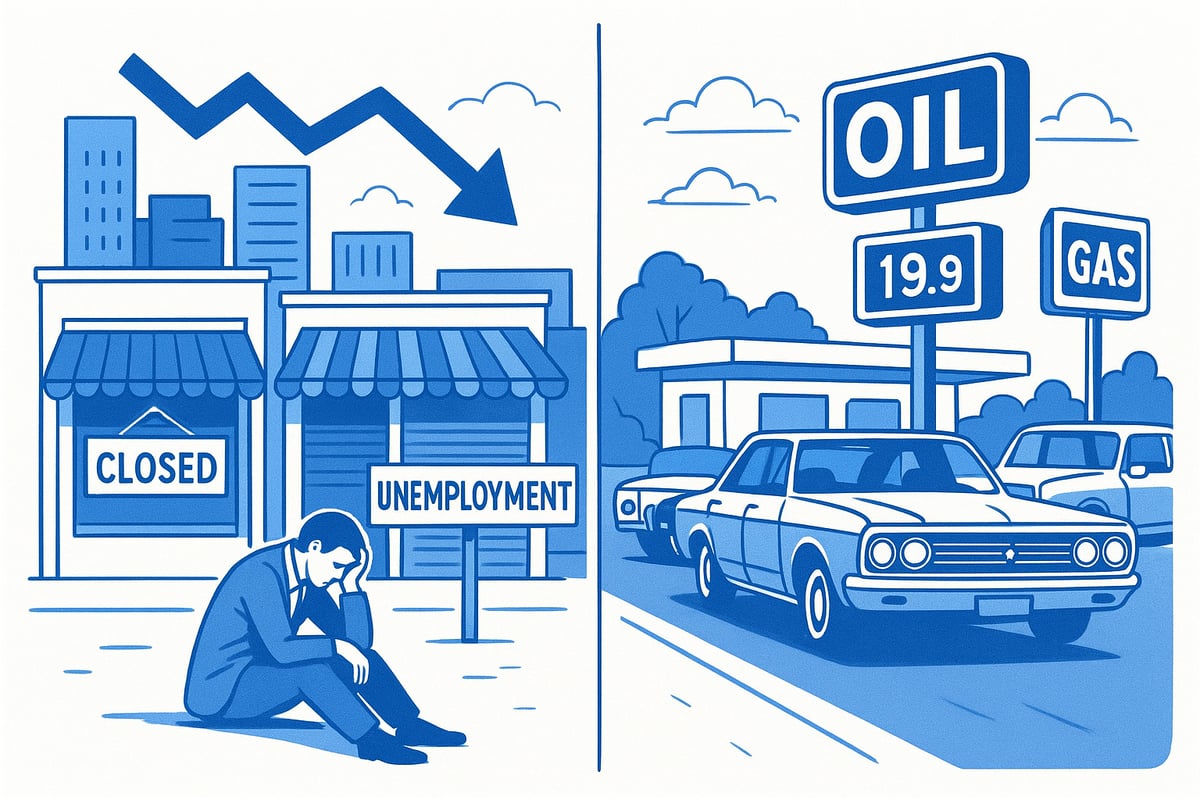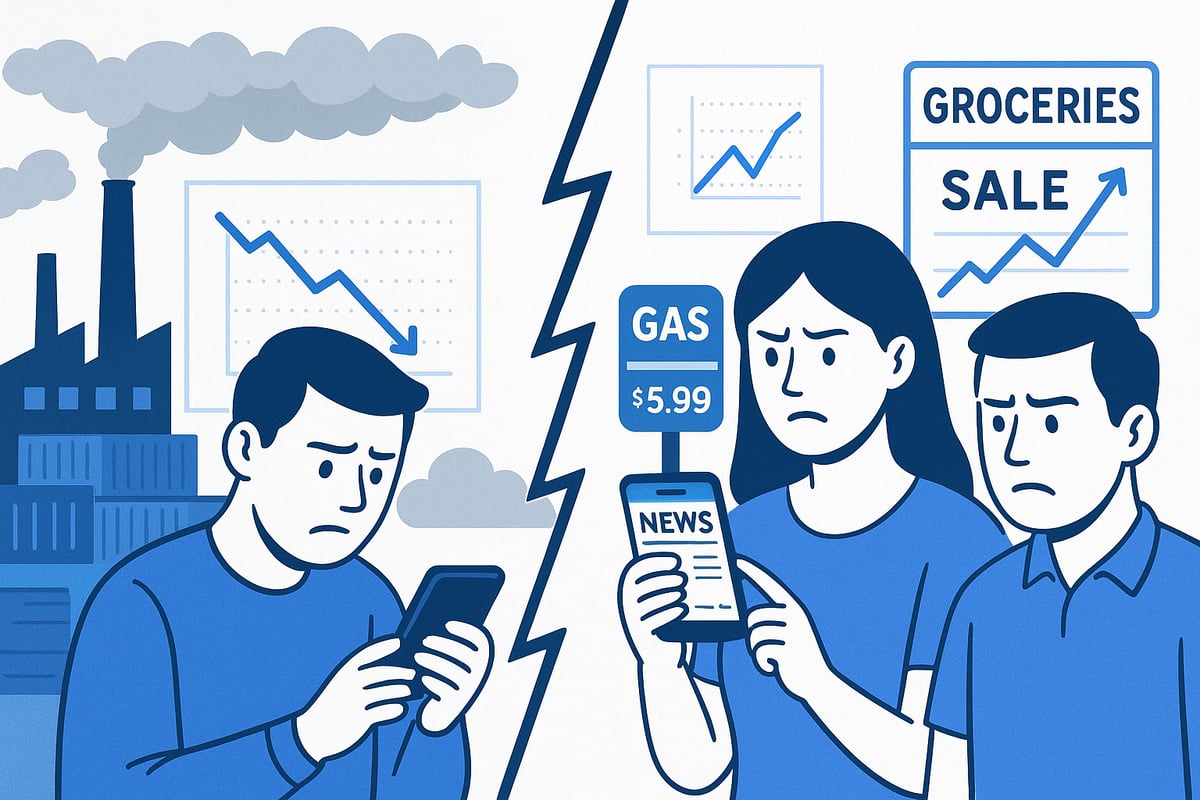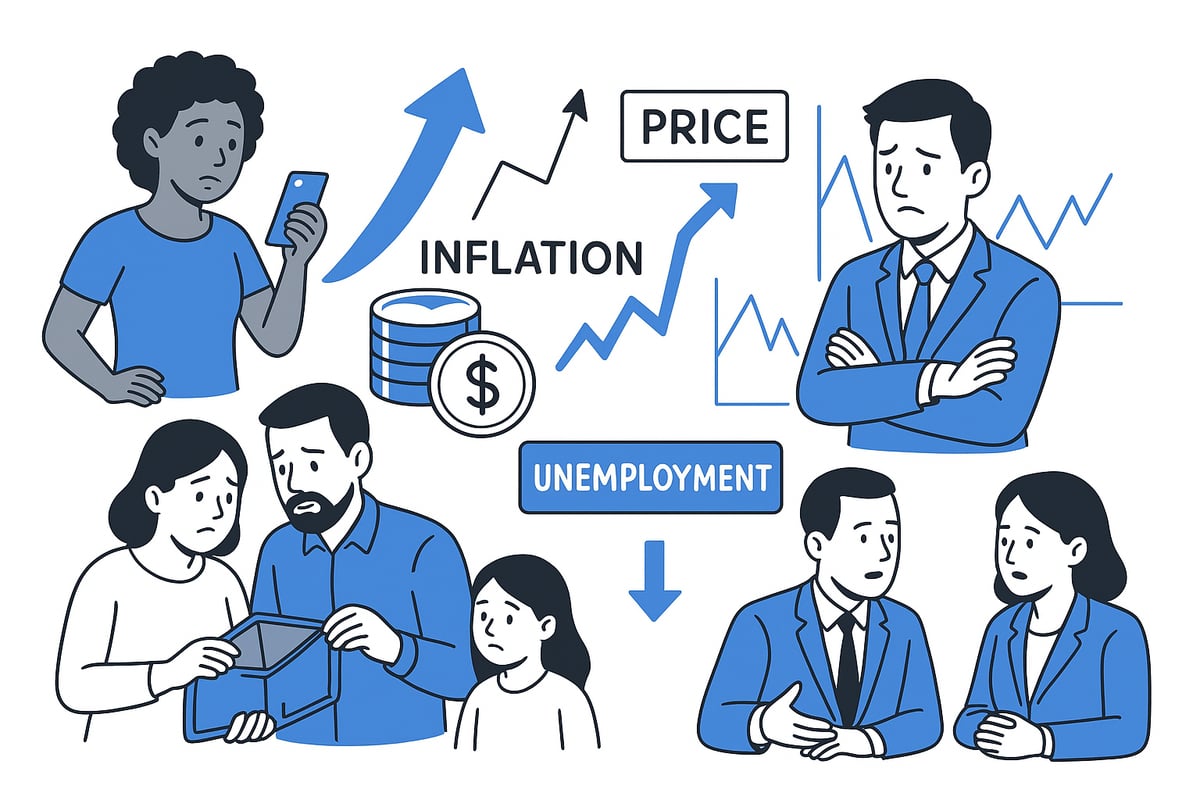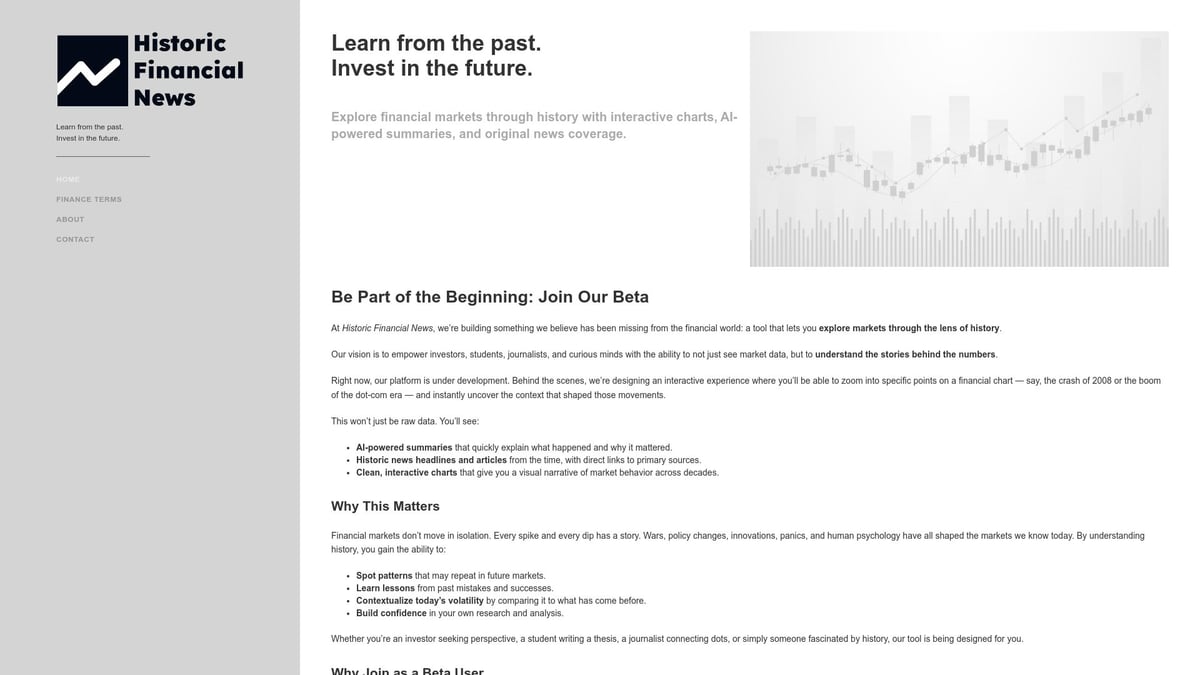Stagflation Guide: Navigating Economic Challenges in 2025
As 2025 unfolds, the world is facing fresh economic headwinds. Rising prices and slowing growth are creating the perfect storm known as stagflation, prompting concern among households, investors, and business leaders.
This guide will break down what stagflation means, why it is posing unique risks in 2025, and how you can adapt to the challenges ahead. You will discover its definition, historical background, root causes, warning signs, and expert-backed strategies to navigate this uncertain terrain. Ready to turn uncertainty into informed action? Let’s get started.
Understanding Stagflation: Definition, History, and 2025 Context
As 2025 brings renewed economic uncertainty, understanding stagflation is essential for individuals and businesses. This section explores its definition, historical roots, why it is back in focus, and the unique threats shaping the current landscape.

What is Stagflation?
Stagflation describes a rare and troubling economic condition where stagnant growth, high unemployment, and persistent inflation occur together. Unlike a typical recession, where falling demand leads to lower prices, or pure inflation, where the economy may still grow, stagflation combines the worst of both worlds.
Key indicators include gross domestic product (GDP), unemployment rates, and the Consumer Price Index (CPI). When these measures point to slow or negative growth, rising joblessness, and sustained price increases, stagflation is likely at play. Understanding these dynamics is crucial for interpreting current economic signals.
Historical Episodes of Stagflation
The most famous stagflation episode struck during the 1970s oil shock. A sudden surge in oil prices sent global costs soaring while economic growth stalled. The United States, along with much of the world, saw unemployment rise sharply as energy and food became more expensive.
Policymakers struggled to respond, as traditional tools like raising interest rates often worsened unemployment. Eventually, a mix of tighter monetary policy and supply-side reforms helped restore stability. The painful lessons of this period continue to inform today’s approach to stagflation risk.
Why Stagflation is Back in Conversation in 2025
In 2025, stagflation has reemerged as a serious concern. Recent data shows US inflation at 2.9 percent in August, while job growth has slowed noticeably. Economists have warned that both growth and inflation forecasts are trending in the wrong direction.
Current triggers include supply chain disruptions, ongoing geopolitical tensions, and significant policy shifts. For a deeper look at how these forces are shaping the US economy, see US - This is what stagflation looks like, which analyzes present-day warning signs and responses.
The Unique Threats of 2025
Stagflation in 2025 stands apart from earlier episodes. The global economy is still adjusting after the pandemic, with new tariffs raising costs for businesses and consumers. Labor shortages have made hiring more expensive, contributing to wage pressures and higher prices.
Financial markets are also more volatile, reflecting increased uncertainty and rapid shifts in investor sentiment. These factors, combined with regional differences in policy and recovery, make the current stagflation threat especially complex and unpredictable.
Causes and Warning Signs of Stagflation in 2025
Understanding the causes and early warning signs of stagflation is essential for anyone preparing for 2025's economic challenges. Stagflation emerges when multiple pressures converge, creating a unique environment that confounds typical policy responses. Let us break down what is driving stagflation now, which indicators to monitor, and how to spot the earliest red flags.

Root Causes in the Modern Economy
Stagflation in 2025 is rooted in a complex mix of supply and demand disruptions. On the supply side, rising energy prices and commodity shortages strain production. Global disruptions in shipping and logistics, often tied to geopolitical events, make it harder for goods to reach markets.
Demand-side factors also play a major role. After the pandemic, consumer behavior shifted, with pent-up demand for some goods and persistent caution in other sectors. Policy missteps, such as poorly timed stimulus or rapid monetary tightening, can amplify stagflation risks by either fueling inflation or stalling growth.
As these forces interact, the result is a stubborn combination of slow growth and rising prices that defines stagflation.
Policy Decisions and Their Impact
Policy choices heavily influence the trajectory of stagflation. In 2025, the United States has imposed new tariffs, increasing the cost of imported goods and raising consumer prices. This approach aims to protect domestic industries but often backfires by adding inflationary pressure.
Immigration policy is another factor. Reduced labor inflows have tightened the workforce, pushing up hiring costs for businesses. Central banks, meanwhile, face a difficult balancing act. Raising interest rates can curb inflation but may suppress already weak economic growth, making stagflation harder to address.
These policy decisions can either mitigate or worsen stagflation, depending on how well they are timed and coordinated.
Key Economic Indicators to Watch
Monitoring the right economic indicators is crucial for anticipating stagflation. Persistent inflation rates above central bank targets, such as the US's 2.9% in August 2025, are a primary warning sign. Rising unemployment, now at 4.3%, signals that the economy is not generating enough jobs.
Sluggish or negative GDP growth rounds out the stagflation profile. For a current and comprehensive assessment of these risks, see the Stagflation Risk Analysis 2025, which details the latest projections, key indicators, and expert concerns shaping the outlook.
Watching these indicators helps individuals and businesses prepare for stagflation's disruptive effects.
Early Warning Signs for Individuals and Businesses
Recognizing stagflation early can help households and companies adapt before conditions worsen. Watch for these red flags:
- Wages that do not keep up with rising living costs
- Declining consumer confidence and reduced spending
- An uptick in business bankruptcies and layoffs
When these signals appear together, stagflation may be taking hold. Staying alert to these trends enables proactive adjustment of budgets, operations, and investment strategies.
Global vs. Local Drivers
Stagflation's causes and impacts are not uniform across regions. International supply chain issues, such as shipping delays and raw material shortages, affect countries worldwide. Domestic policy decisions, however, create unique local pressures.
Here is a comparison of stagflation drivers in major regions:
| Region | Key Global Drivers | Local Policy Factors |
|---|---|---|
| US | Supply chain disruptions | Tariffs, immigration rules |
| EU | Energy market volatility | Labor market regulations |
| Emerging Mkts | Commodity price swings | Fiscal policy constraints |
In 2025, the US faces tariff-induced inflation, while the EU contends with energy shocks. Emerging markets often experience sharper commodity swings and limited policy flexibility. Understanding both global and local factors is vital for an accurate stagflation risk assessment.
The Economic Impact: How Stagflation Affects Households, Businesses, and Markets
Stagflation is not just an economic term, it is a reality that touches every corner of society. Its unique combination of rising prices and stalled growth creates ripple effects that shape daily life, business decisions, and financial markets. Understanding these impacts is essential for anyone seeking stability in 2025.

Effects on Households
For households, stagflation means that paychecks do not stretch as far as they used to. Essentials like food, gasoline, and rent climb in price. Wages, however, often fail to keep up with these increases, reducing overall purchasing power.
Families may find themselves making hard choices, cutting back on non-essentials, or seeking additional income sources. The risk of falling below the poverty line grows, as recent data from the Yale Budget Lab warns that 650,000 more Americans could become vulnerable due to new tariffs.
Households must remain vigilant, as stagflation can quickly erode financial security, especially for those with limited savings.
Impact on Businesses
Businesses face a challenging environment during stagflation. Input costs for materials, transportation, and labor rise, but passing these costs onto consumers is not always feasible. Customers may pull back on spending, leading to weaker sales.
Profit margins are squeezed, and some companies confront the possibility of layoffs or hiring freezes. Startups and small firms are especially vulnerable, often lacking the resources to weather prolonged downturns.
Monitoring key metrics, such as operating margin, helps businesses understand the financial pressures unique to stagflation and make informed decisions to navigate uncertainty.
Financial Markets and Investments
Financial markets become more volatile in a stagflation scenario. While inflation pushes interest rates higher, economic stagnation weighs on corporate profits and investor sentiment. Stocks often experience sharp swings, and traditional bond investments may lose value as rates rise.
Historically, certain assets like commodities and real estate have performed better during stagflation, providing a potential hedge. Investors must reassess portfolios, considering diversification and inflation-protected securities.
Learning from previous episodes, such as the 1970s, can help individuals and institutions anticipate market shifts and safeguard capital.
The Role of Central Banks and Monetary Policy
Central banks, including the Federal Reserve, play a critical role during stagflation. Their usual tools, such as raising or lowering interest rates, may be less effective when inflation and unemployment rise together.
If rates are hiked to control inflation, borrowing costs increase and growth slows further. If rates are cut to spur growth, inflation may worsen. Policymakers must balance these risks carefully, as highlighted in Powell’s 2025 Jackson Hole speech, where he acknowledged the shifting balance of risks.
The complexity of stagflation makes monetary policy decisions more consequential and more difficult than in standard cycles.
Societal and Political Consequences
Beyond economics, stagflation fuels social and political challenges. As inequality widens, public frustration grows. Debates intensify over the best policy response—should governments spend more to support growth, or tighten belts to fight inflation?
Political leaders often face criticism, especially if tariffs or other policies are seen as contributing factors. Social unrest can increase as more people feel left behind, and trust in institutions may erode.
Stagflation, therefore, is not just a financial issue, but a catalyst for broader societal change that demands careful attention from all stakeholders.
How to Navigate Stagflation: Strategies for Individuals, Investors, and Businesses
Navigating stagflation in 2025 demands a proactive and informed approach. With persistent inflation and stagnant growth shaping economic realities, individuals, investors, and businesses must adapt quickly. Structured strategies can help you build resilience and position yourself for stability, even as stagflation introduces new uncertainties into financial planning.
Step 1: Assess Your Financial Position
The first step in confronting stagflation is a clear-eyed review of your finances. Start by analyzing your income, fixed expenses, and outstanding debts. Look for areas where rising prices could strain your budget or where job loss would create vulnerabilities.
Build a robust emergency fund that covers at least three to six months of essential expenses. This safety net is crucial during stagflation, as both employment and purchasing power become less predictable. Regularly revisit your budget to stay ahead of changing circumstances.
Step 2: Safeguard and Optimize Investments
Stagflation can unsettle traditional investment strategies, making diversification more important than ever. Spread your assets across inflation-resistant options, such as commodities, real estate, and inflation-protected securities like TIPS.
Historical data shows that some sectors perform better during stagflation than others. To learn how experts recommend protecting your portfolio and what stagflation means for your money, see Experts see higher stagflation risks. Here's what it means for your money. Review and rebalance your holdings regularly to adapt to shifting economic conditions.
Step 3: Adapt Household Budgets and Spending
During stagflation, prioritizing essential expenses is vital. Focus your spending on necessities like food, housing, and healthcare. Identify areas for potential savings, such as buying in bulk, reducing energy consumption, or eliminating non-essential subscriptions.
Track price trends for the goods and services you use most. Adjusting your purchasing habits in response to inflationary pressures helps protect your household from the worst effects of stagflation. Stay flexible and open to new cost-saving strategies as conditions evolve.
Step 4: Business Adaptation and Risk Management
Businesses facing stagflation must act decisively to protect margins and maintain operations. Evaluate your supply chains for vulnerabilities, seeking alternative sources or negotiating better terms when possible.
Consider dynamic pricing strategies to offset rising input costs without alienating customers. Invest in workforce flexibility and productivity improvements, which can help your business stay competitive as stagflation increases operational challenges.
Step 5: Engage with Policy and Community Resources
Government programs and community networks can provide crucial support during stagflation. Stay informed about relief measures, tax adjustments, and changes in social assistance that may affect your situation.
Participate in local business groups or neighborhood associations to share resources and information. Advocacy for effective policy responses can also make a difference, as collective action may help shape the broader response to stagflation.
Step 6: Leverage Historical Insights for Better Decision-Making
Studying past periods of stagflation offers valuable lessons. Analyze how businesses and investors previously responded to similar challenges, and look for patterns in market and policy reactions.
Historical perspective can help you anticipate potential pitfalls and recognize opportunities. Use this knowledge to guide your decisions, reducing uncertainty and building confidence as you navigate stagflation in 2025.
Step 7: Prepare for Long-Term Adaptation
Stagflation is rarely resolved quickly, making long-term planning essential. Focus on developing new skills and maintaining career flexibility to weather prolonged economic uncertainty.
For households and businesses alike, resilience is built through careful preparation and adaptability. By planning for a range of outcomes, you can position yourself to withstand the evolving effects of stagflation and emerge stronger when conditions improve.
Expert Perspectives and Forecasts: What’s Next for Stagflation in 2025?
As the economic landscape shifts in 2025, experts are debating where stagflation might head next. Their perspectives provide essential context for those seeking to adapt quickly. Let’s break down the main themes shaping the stagflation conversation this year.
Economist Views on the Outlook
Economists are sharply divided on the future of stagflation in 2025. Columbia Business School notes that growth and inflation forecasts have shifted due to recent policy changes. Some experts highlight that companies are increasingly passing higher costs to consumers, a phenomenon Brown University calls a key stagflation risk.
Others remain cautious, arguing that while inflation remains stubborn, there may still be room for growth if supply chain issues ease. For deeper insights, the MSM Times article Stagflation Concerns Rise: Fed Forecasts Higher Inflation and Slower Growth in 2025 offers a thorough look at current economic projections.
Policy Responses and Debates
Central banks are facing unprecedented challenges as stagflation risks mount. The Federal Reserve must decide between raising rates to curb inflation or keeping them steady to support weak growth. Fiscal policymakers are also split, debating whether to stimulate the economy further or prioritize deficit reduction.
Internationally, coordination is proving difficult. Some leaders argue for targeted stimulus, while others recall the lessons of the 1970s and warn against excessive spending. The policy response to stagflation in 2025 will likely shape the pace and severity of the recovery.
Scenario Planning: Best- and Worst-Case Outcomes
Forecasting stagflation means preparing for a range of scenarios. In a best-case outcome, inflation moderates and growth gradually returns as supply chains stabilize. In a worst-case scenario, persistent inflation combines with rising unemployment, pushing economies toward deeper stagnation.
| Scenario | Inflation | Growth | Unemployment | Likelihood (2025) |
|---|---|---|---|---|
| Best-Case | Mild | Modest | Stable | Moderate |
| Worst-Case | High | Negative | Rising | Elevated |
Triggers to watch include energy price shocks, new trade barriers, and unexpected geopolitical events. Policymakers’ choices will determine how quickly economies can recover from stagflation.
What Individuals and Businesses Should Watch For
To navigate stagflation, staying informed is crucial. Monitor key data releases such as employment figures, GDP growth, and especially inflation indicators. Understanding the Consumer Price Index can help individuals and businesses spot trends early.
Remain adaptable by watching for policy announcements and shifts in consumer confidence. Ongoing education and a proactive approach can make the difference between resilience and vulnerability as stagflation risks evolve.
The Value of Historical Analysis in Understanding and Navigating Stagflation
Understanding stagflation in 2025 requires more than just watching current headlines. Economic patterns often repeat, and history offers a roadmap for recognizing risks before they escalate. By examining previous periods of stagflation, individuals and businesses can better anticipate challenges and make informed decisions.
Why Historical Context Matters
Historical context is vital for making sense of stagflation. When economies faced stagflation in the 1970s, policymakers and businesses learned hard lessons about what works and what does not. By reflecting on these episodes, we can avoid repeating mistakes and instead adopt strategies proven to mitigate damage.
Patterns from the past reveal how quickly situations can change. For example, sudden oil price shocks triggered stagflation decades ago. Recognizing similar shocks today helps prepare for volatility. Learning from history strengthens economic resilience and encourages smarter responses to uncertainty.
Tools and Resources for Historical Market Analysis
Modern tools make it easier to study stagflation’s past. Interactive charts allow users to track inflation, unemployment, and GDP over time. Primary source news archives provide real-time perspectives from earlier crises. AI-powered summaries help distill complex events into actionable insights.
Educational platforms now offer pattern recognition and contextual learning modules. To clarify complex economic concepts, readers can reference a Key finance terms glossary, which supports deeper understanding of market analysis. These resources make historical research accessible for everyone.
Applying Historical Lessons to 2025 Decision-Making
Applying lessons from past stagflationary periods is crucial for today’s decision-makers. Businesses that survived previous crises often adapted quickly, diversified supply chains, and managed costs effectively. Investors learned to watch for early warning signals, such as rising input prices and slowing consumer demand.
Case studies highlight how strategic planning and flexibility led to success. Recognizing early signs of stagflation in financial data gives households and firms a head start. Evidence-based planning, grounded in history, builds confidence and helps navigate turbulent times with precision.
Explore Financial History with Historic Financial News
Historic Financial News is a platform designed to help users explore financial history and its relevance to current stagflation risks. The site offers interactive charts, AI-powered summaries, and curated news coverage of historical market events. Investors, students, and journalists can spot patterns, compare crises, and understand how past events inform today’s decisions.

Joining the beta program provides exclusive access to educational tools and a community focused on learning from history. Leveraging these resources empowers users to make informed choices as stagflation challenges unfold in 2025.
As we’ve seen, understanding stagflation requires more than just watching today’s headlines—it’s about recognizing patterns, learning from past challenges, and making smarter decisions for the future. If you’re ready to deepen your knowledge and gain real historical context on economic shifts like those we face in 2025, I invite you to explore our new platform. You’ll get access to interactive charts, AI-powered insights, and a community of curious minds, all designed to help you navigate uncertainty with confidence. Want to help shape this resource from the start? Join Our Beta
